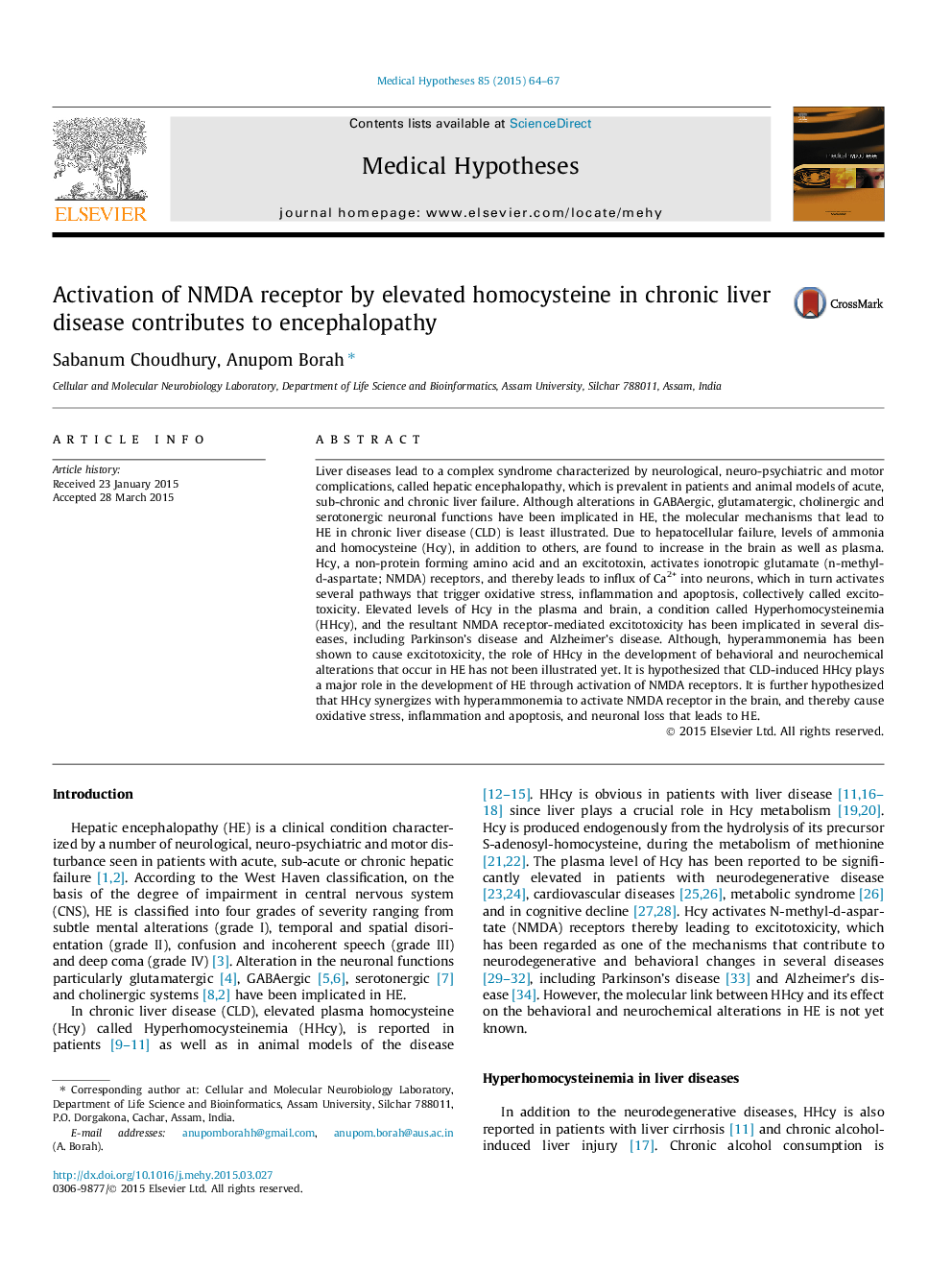| Article ID | Journal | Published Year | Pages | File Type |
|---|---|---|---|---|
| 5810593 | Medical Hypotheses | 2015 | 4 Pages |
Liver diseases lead to a complex syndrome characterized by neurological, neuro-psychiatric and motor complications, called hepatic encephalopathy, which is prevalent in patients and animal models of acute, sub-chronic and chronic liver failure. Although alterations in GABAergic, glutamatergic, cholinergic and serotonergic neuronal functions have been implicated in HE, the molecular mechanisms that lead to HE in chronic liver disease (CLD) is least illustrated. Due to hepatocellular failure, levels of ammonia and homocysteine (Hcy), in addition to others, are found to increase in the brain as well as plasma. Hcy, a non-protein forming amino acid and an excitotoxin, activates ionotropic glutamate (n-methyl-d-aspartate; NMDA) receptors, and thereby leads to influx of Ca2+ into neurons, which in turn activates several pathways that trigger oxidative stress, inflammation and apoptosis, collectively called excitotoxicity. Elevated levels of Hcy in the plasma and brain, a condition called Hyperhomocysteinemia (HHcy), and the resultant NMDA receptor-mediated excitotoxicity has been implicated in several diseases, including Parkinson's disease and Alzheimer's disease. Although, hyperammonemia has been shown to cause excitotoxicity, the role of HHcy in the development of behavioral and neurochemical alterations that occur in HE has not been illustrated yet. It is hypothesized that CLD-induced HHcy plays a major role in the development of HE through activation of NMDA receptors. It is further hypothesized that HHcy synergizes with hyperammonemia to activate NMDA receptor in the brain, and thereby cause oxidative stress, inflammation and apoptosis, and neuronal loss that leads to HE.
